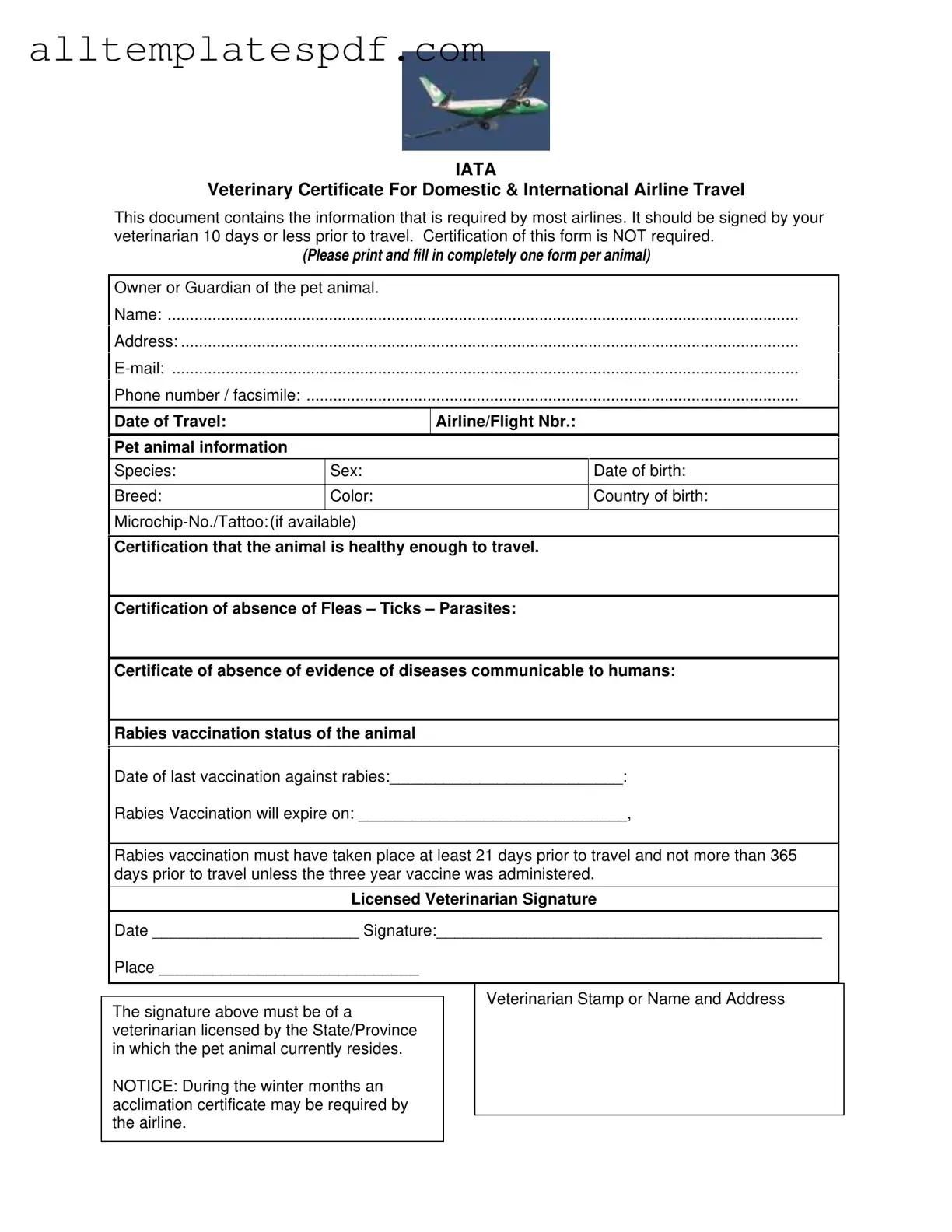Filling out the Veterinary Certificate Travel form is crucial for ensuring your pet can travel without issues. However, many people make mistakes that can lead to delays or even denial of travel. One common error is failing to sign the form. The form must be signed by a licensed veterinarian within ten days of travel. Without this signature, the document is incomplete and may not be accepted by the airline.
Another frequent mistake involves incorrect or incomplete pet information. Each section of the form must be filled out accurately. This includes details such as the pet's species, breed, sex, and color. Omitting or misreporting any of this information can cause confusion and may prevent your pet from boarding the flight.
Many pet owners overlook the rabies vaccination details. It's essential to provide the date of the last vaccination and the expiration date. Additionally, remember that the vaccination must have occurred at least 21 days prior to travel. If this requirement isn't met, airlines may refuse to transport your pet.
Some individuals neglect to certify the animal's health properly. The form requires a certification that the pet is healthy enough to travel. If this certification is missing or vague, it may raise concerns for airline staff and lead to delays.
Another mistake is not including the veterinarian's stamp or contact information. The form must include the veterinarian's name, address, and stamp. This information is critical for verifying the legitimacy of the certification. Failing to provide this can result in complications at the airport.
People often forget to double-check the contact information provided on the form. The owner's name, address, email, and phone number must be accurate. If there are any issues during travel, airlines need to reach you quickly. Incorrect information can lead to unnecessary stress and complications.
Lastly, neglecting to review the airline's specific requirements can be a significant oversight. Different airlines may have unique policies regarding pet travel. Before submitting the form, it's vital to check for any additional documents or certifications that may be required. Ignoring these details can result in last-minute surprises and potential travel disruptions.
